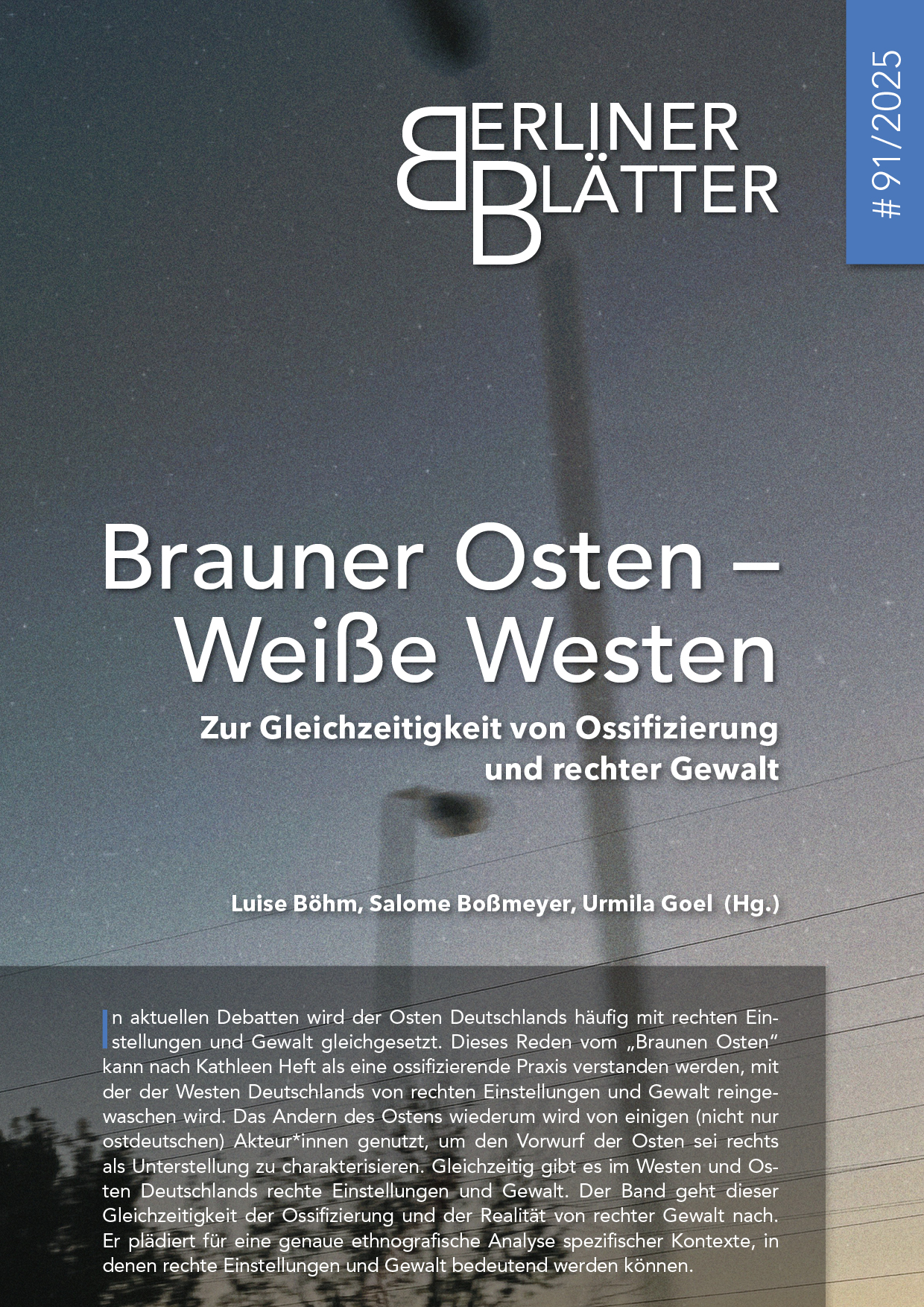Rechtsextremismus in Ostdeutschland - Spezifik oder Ossifizierung?
Kategorien für eine mehrebenenanalytische Betrachtung
DOI:
https://doi.org/10.60789/911189Schlagworte:
Rechtsextremismusforschung, extreme Rechte , Ostdeutschland , Ossifizierung , Mehrebenenanalyse, Rechtsextremismus und SchuleAbstract
Ausgehend von einem aktuellen Fall im Bundesland Brandenburg argumentiert der Artikel für eine regionalspezifische, historisch-rekonstruktive Analyse extrem rechter Erscheinungsformen. Zusammenfassend wird nachgezeichnet, wie der Diskurs über Rechtsextremismus in Ostdeutschland seit den frühen 1990er Jahren verlaufen ist. Der kritische Blick auf den ‚Braunen Osten‘ als Diskurs bedeutet dabei nicht, die durch Forschung und Monitoring belegte Gewalt und Strukturen, die damit in Beziehung stehen, als Erfindung abzutun. Vielmehr läßt sich eine Spezifik extrem rechter Erscheinungsformen in Ostdeutschland nachzeichnen. Zugleich gilt es, die Gleichzeitigkeit zweier Phänomene zu berücksichtigen: Das pauschal abwertende Reden über ‚den Osten‘ und die damit verbundene Entlastung für den Westen. Der Artikel fragt danach, welche Bedingungen Forschung berücksichtigen sollte, um eine differenzierte Thematisierung der extremen Rechten in Ost- und Westdeutschland zu ermöglichen. Es werden Kategorien für die Erforschung von Rechtsextremismus vorgeschlagen, mit denen eine fallspezifische Mehrebenenanalyse ermöglicht wird und somit versucht werden kann, geografisch-historischen sowie aktuellen Entwicklungen angemessen zu entsprechen. Ziel ist es, über determinierende und vereinseitigende Zuschreibungen des ‚Braunen Osten‘ hinauszukommen; gleichzeitig werden Spezifika untersuchbar und Erkenntnisse benennbar.
Downloads
Veröffentlicht
Zitationsvorschlag
Ausgabe
Rubrik
Lizenz
Copyright (c) 2025 Heike Radvan

Dieses Werk steht unter der Lizenz Creative Commons Namensnennung - Nicht-kommerziell - Weitergabe unter gleichen Bedingungen 4.0 International.








